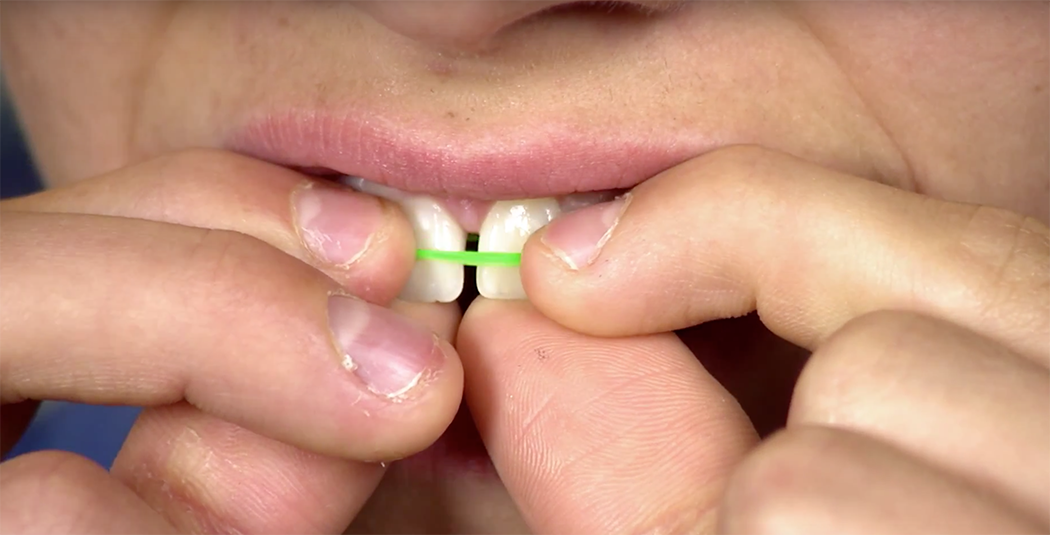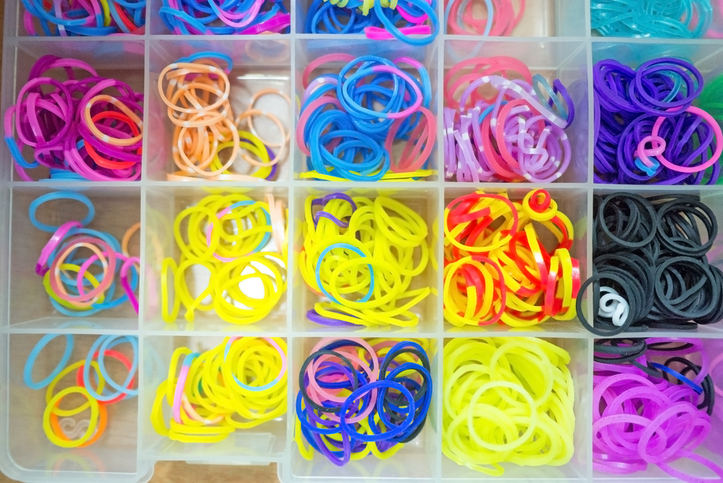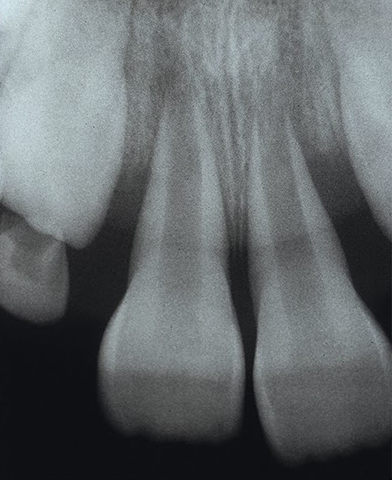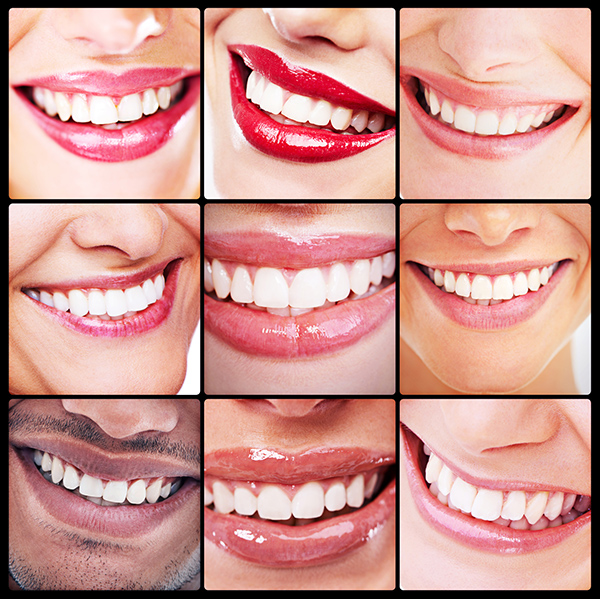
Gap bands are no replacement for orthodontic treatment. Photo from a public service video by American Association of Orthodontists.
*Sponsored post*
Considering do-it-yourself orthodontics? Nothing says expertise in physics, biology and anatomy like internet tutorials and a box of store-bought rubber bands.
Trending these days on social media is the budget-enticing “phenom” of DIY teeth straightening. The concept is wallet-friendly, especially compared with procedures handled by a licensed dental professional. But before consulting Pinterest, neighborhood orthodontist Dr. Patricia Simon with Lakewood Orthodontics offers this advice: “Consider the fine print.”
What do-it-yourselfers don’t realize, Dr. Simon says, is that closing a gap isn’t as simple as applying a rubber band to your two front teeth.

Colourful rubber bands.
“There is no gram/ounce regulation on store rubber bands, which dictate the bands’ force. At-homers can’t tell how long a tooth’s roots are or where it’s positioned in the bone, so they can easily stress the tooth’s natural biological structure,” says Dr. Simon, a Lakewood orthodontist.
A tooth is conical, which means the rubber band can roll past the gum line to the root. There are documented cases where DIY’ers thought a self-applied band had somehow slipped off and put on another one, causing all sorts of trouble with their teeth, Dr. Simon says.

X-ray of teeth roots damaged by gap bands, requiring extensive oral surgery. Photo from American Journal of Orthodontics and Dentofacial Orthopedics.
“Inserting a foreign object violates the connective tissue between the tooth and bone, which starts inflammation and a slow extraction of a tooth without even knowing it.”
Those who try orthodontics at home can easily mess up their mouth’s biological framework, potentially resulting in expensive infections, loose or broken teeth, gum loss, a root canal or all of the above.
The East Dallas orthodontist recommends starting with a cephalometric — or side view — x-ray of one’s head. Dr. Simon takes certain geometrical measurements of the skull’s base, position of the nasal bone, upper and lower jaw, upper and lower molars and front teeth to determine the framework of a patient’s skeleton, allowing her to determine where things are or should be.

Professional Orthodontists like Dr. Simon know how to safely correct problems for a world of beautiful smiles.
Starting with the right information, which is different for every patient, keeps patients from creating thousands of dollars in damages to repair.
“A treatment plan is like a construction plan. Sometimes the human body doesn’t want to do what you want it to, but a skilled orthodontist knows how to get around that,” Dr. Simon says.
Go ahead and check out the internet ideas, Dr. Simon says, but before you do anything else, visit your neighborhood orthodontist for a personalized treatment plan. That way, you’ll avoid being led astray by social media how-to videos and simplistic advice from untrained amateurs bragging about unrealistic outcomes.
A practicing orthodontist for 25 years, Dr. Simon welcomes patients at Lakewood Orthodontics, 1809 Skillman Ave. lakewoodortho.net





